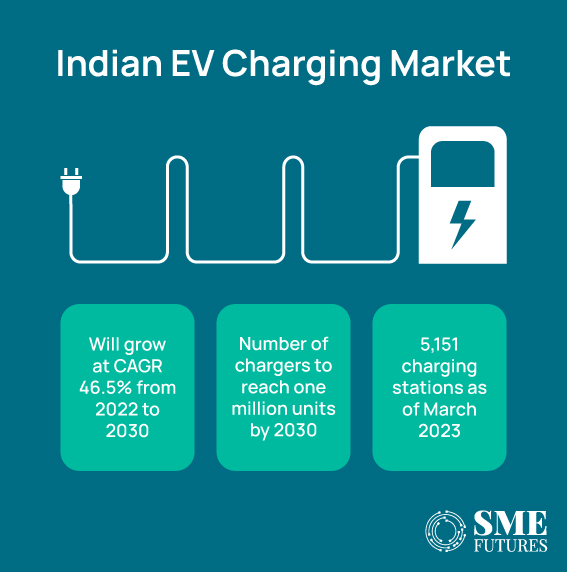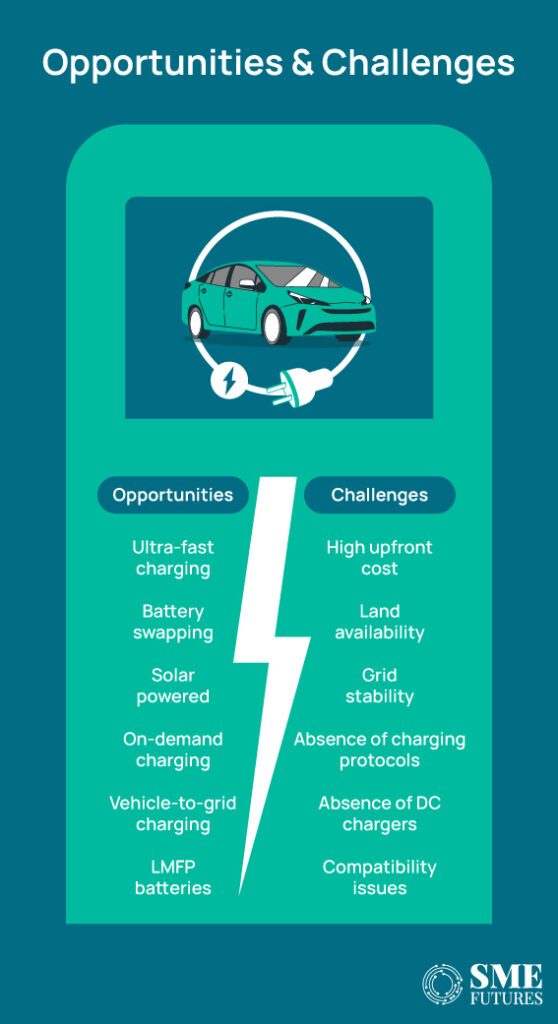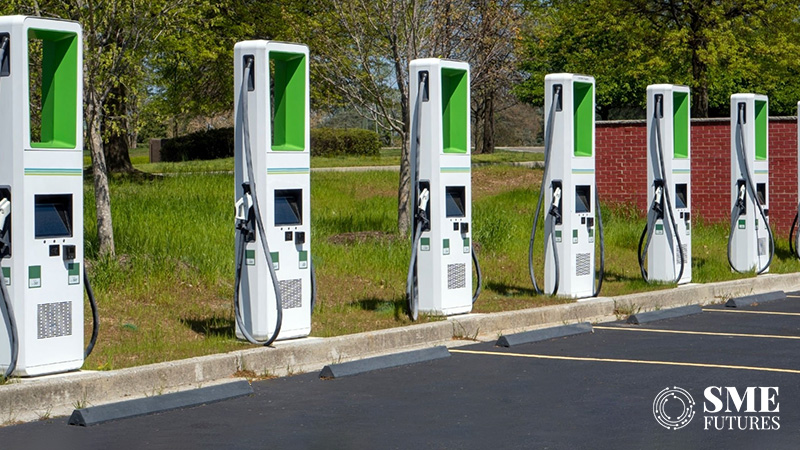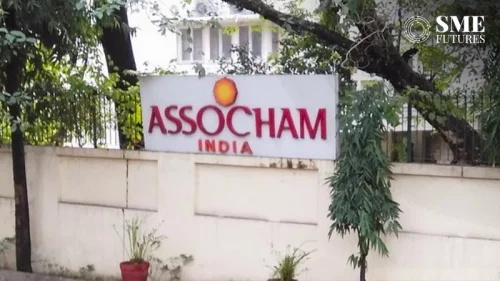In recent years, India has witnessed a remarkable transformation in its transportation sector, with the rapid adoption of electric vehicles (EVs). As the world moves towards a sustainable future, the EV industry along with the electric charging infrastructure has emerged as a key player in revolutionising mobility in the country. Let’s take a closer look at the current status and the future projections of this dynamic industry along with the challenges faced by it.
The current scenario
The EV charging industry in India has witnessed significant growth and evolution in recent years. However, the market is still in its infancy. According to the S&P Global Ratings data, the Indian market’s penetration rate of EVs was only 1.1 per cent in 2022, compared to the Asian average of 17.3 per cent.
But still India is pushing for more EVs on the road.
Over the years, this has resulted in a remarkable increase in both public and private charging infrastructure. According to the Society of Manufacturers of Electric Vehicles (SMEV), India had 5,151 EV charging stations as of March 31, 2023. The rate at which EV charging stations are growing is very promising for the overall EV industry.
The Founder & MD of Ipower Batteries Pvt Ltd, Vikas Aggarwal says, “This growth has been spurred by the government’s push towards electric mobility, accompanied by favourable policies and incentives to promote the development of charging stations across the country.”
China has 6 charging stations per EV
Today, major cities in India have a growing network of charging stations, including fast-charging options, making it increasingly convenient for EV users to charge their vehicles. The introduction of innovative charging solutions, such as battery swapping stations, has further addressed the challenge of long charging times and range anxiety.
Ashish Deswal, Founder, EarthtronEV, an EV charging firm feels that charging stations are still relatively scarce in India, particularly in the rural areas, which limits the convenience and practicality of EV ownership.
“There is one charger per 135 EVs in India, compared to 6 in China. Among the 940 EV charging stations in the major cities, 648 have been installed between October 2021 and January 2022 – a 2.5 times increase from last year’s number,” he says.
He further explains, “Setting up an EV charging station requires an investment of around 1 lakh to 40 lakhs, depending on the chargers that need to be installed. High demand-low supply is a big market opportunity for industry players. Several start-ups and small and medium enterprises (SMEs) are also looking at setting up charging stations for EVs. The escalating demand has encouraged several banks and non-banking companies (NBCs) to come up with lucrative loan options for setting up EV charging stations.”

How is the government fuelling this growth?
With the government’s ambitious target of 30 per cent electric vehicle penetration by 2030, there is a strong impetus to expand the charging network exponentially.
“The government is encouraging the building of EV charging stations by giving capital subsidies through the FAME India Programme Phase II and state-level initiatives. In addition, the government has announced many incentives, including the FAME-II PLI SCHEME, the Battery Switching Policy, the Special Electric Mobility Zone, and tax reduction on EVs,” Aggarwal points out.
“Now all new societies are required to install EV charging stations in their parking areas which I believe is a very positive step,” he adds.
To facilitate this growth, collaborations between the government, the private sector, and the charging infrastructure providers are being forged to accelerate the deployment of charging stations, with a focus on strategic locations such as highways, urban centres, and commercial hubs.
“There have been several initiatives by the government, like de-licensing EV charging station installations to facilitate the development of the charging infrastructure on a priority basis to achieve a target of installing 2.5 million EV charging stations pan-India by 2030. The government has also extended permits for the installation of private charging stations in residential areas and offices,” Deswal comments.
He further adds, “Individuals can easily approach their local or state nodal agency for the installation of a private charging point. Also, there are directives permitting the installation of charging points in malls, housing societies, office complexes, restaurants, hotels, and other public places. The FAME scheme also covers the establishment of EV charging infrastructure, offering up to a 50 per cent subsidy on the cost of charging equipment and installation.”
Moreover, the integration of renewable energy sources with the charging infrastructure will contribute to reducing carbon emissions and promoting sustainable practices.

Bumps on the road
However, the electric charging infrastructure in India faces several challenges that need to be addressed for it to reach its full potential. One of the key hurdles is the high upfront cost of setting up charging stations, along with concerns related to land availability and grid stability.
“The high capital costs involved in setting up charging stations act as a deterrent for private players and result in the slower expansion of the charging network. Also, the absence of standardized charging protocols and connectors is a challenge. Different charging standards adopted by various EV manufacturers can create compatibility issues, making it difficult for EV owners to find a suitable charging station,” says Deswal.
While the EVs can be charged through multiple means, the charging requirement varies with the category that each EV belongs to – the two-wheeler, three-wheeler or four-wheeler category. In most places in the country, EVs are charged by conductive charging technology.
“The prevalent practice of charging electric two, three and four-wheelers and other light commercial vehicles is through normal power AC charging. However, there is an increasing need to create a widespread infrastructure for high-power DC chargers, which are faster but require a high electricity supply,” Deswal adds.
“Charging time, battery cost, the initial cost of ownership, insufficient infrastructure, and range anxiety are the major barriers to EV growth in India. The EV business in India faces significant challenges due to the lack of suitable charging infrastructure. Aside from a few metros, there are extremely few charging stations, making it difficult for daily commuters to transition to EVs,” Aggarwal points out.
“When it comes to development, the electric charging infrastructure has various gaps and problems, and the lack of funding for grid development to accommodate the growing load is another big issue,” he adds.
Addressing these challenges requires supportive policies, incentives, and regulatory frameworks that will encourage investment in charging infrastructure. “Charging network operators need to achieve financial sustainability to continue operating and expanding their infrastructure,” he further says.
“Technological advancement has also enabled the inclusion of automation in the process and heavy batteries need not be removed manually with the help of robotics. This process also makes recharging quicker as the depleted batteries can be fully charged within minutes,” he explains.
Innovation fuelling advancement
However, this industry is witnessing a lot of technological advancements like ultra-fast charging, battery swapping stations, solar-powered charging stations, and mobile or on-demand charging solutions like Hopcharge, an EV charging start-up which SME Futures has covered earlier.
“When India introduced the AIS 156 amendment, it gave us a chance to explore the new chemistry for our batteries and we are happy to announce that we have launched Rugpro,” Aggarwal enthuses.
He talks about the various fire incidents that happened last year and how they took steps to contain and mitigate them. “Rugpro’s chemistry is LMFP, which is a combination of the best features of NMC and LFP. NMC has high energy density, which is good for long drives, but NMC is also low in thermal stability,” he explains.
“Unlike NMC, the LFP has high thermal stability but low energy density. But LMFP has both the best features of NMC and LFP. It has high energy density and high thermal stability. Our Rugpro is made for Indian climatic conditions,” he elaborates.
“The industry is also likely to witness advancements in charging technologies, such as wireless charging and vehicle-to-grid (V2G) systems. V2G systems enable bidirectional power flow between EVs and the grid, allowing EVs to serve as energy storage devices and support grid stability,” Deswal tells us.
Bright future for EV charging in India
The future of the EV charging space in India looks promising, with several key projections and a roadmap in place to support the growth of electric mobility.
“The government has set ambitious targets to deploy a large number of public charging stations (PCS) in urban areas, along highways, and in residential complexes. This expansion will be crucial in addressing range anxiety and in encouraging the adoption of EVs,” Deswal asserts.
Aggarwal tells us that the Indian EV charging sector is estimated to develop at a 22.20 per cent CAGR between 2023 and 2028, reaching 3.86 million units by 2028.
According to Counterpoint Research, India will have 10,000 public charging stations by the end of 2025 and by 2030, India will require 20.5 lakh charging stations.
“Aside from the original equipment manufacturers (OEMs), independent charging station specialists and service providers, a variety of additional parties such as government agencies, PSUs, DISCOMS, private energy firms, and construction and real estate developers will all contribute to the country’s charging infrastructure expansion,” Aggarwal emphasises.
In conclusion, it can be said that with a growing network of charging stations, supportive government policies, and an increasing number of electric vehicles hitting the roads, India is well-positioned to embrace a cleaner and more sustainable mode of mobility. However, addressing the challenges related to infrastructure, interoperability, and consumer adoption will be key to realizing the full potential of this transformative industry.
By fostering collaborations and implementing effective strategies, India can accelerate the electric revolution and pave the way for a greener and more efficient transportation ecosystem.











